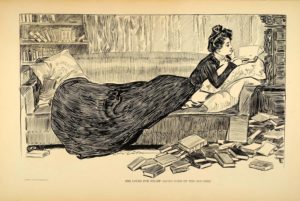By Philip Carter
In late summer a history lecturer’s fancy wearily turns to thoughts of reading lists. But what to add to last year’s carefully constructed selection, and where to start?
The IHR’s Bibliography of British and Irish History (BBIH) is designed to help you through the thickets of recent publication, as well as guide you to key reading if you’re teaching a subject (and creating a reading list) for the first time.
What is the Bibliography of British and Irish History?
The Bibliography is a unique listing of recent and historical studies of the British past—covering Britain, Ireland and the British world, from the Roman occupation to Brexit.
It currently provides records of more than 600,000 titles (monographs, journal articles and book chapters), published from the early 20th century to 2019. It’s updated three times a year with the latest publications using data drawn from weekly bibliographical searches of the British Library and over 800 academic history journals.
In other words, it does the work of searching and gathering that we’d all like to do, but have so little time to do.
As well as lots of content, it’s also curated content
Just as important, all this content is then sifted, checked, edited and re-checked by the IHR’s in-house team of professional bibliographers and external ‘section editors’—each of whom is a subject specialist in British, Irish and imperial history.
The result is a curated and authoritative listing of works relating to the British and Irish past. This makes BBIH much more trustworthy and comprehensive than a lucky-dip search on Google Scholar come late August.
As a record of publishing in British history, the Bibliography attests to the huge scale of this activity, year-on-year. For 2016-17 alone, BBIH lists nearly 15,000 new titles: 965 of these relate to the period 1200 to 1300, with a further 6,618 spanning the twentieth century; another 2,352 works shed new light on the British empire and Commonwealth, while 33 chart the history of UK telecommunications.

Erasmus, reading, 1555: National Portrait Gallery, London, CC BY-NC-ND 3.0
The identity of the last person to have read everything ever published remains up for debate. Many say it’s Erasmus (whose name appears in 104 titles listed in BBIH); some claim Francis Bacon (504), others Coleridge (229). One thing’s for certain, it’s never going to be any of us.
BBIH search options help find what’s most useful to you
The scale of recent historical publishing, as listed by BBIH, can be overwhelming and a little dispiriting. But the Bibliography is also designed to help—not least with the compilation and updating of reading lists with the latest monographs, journal articles and book chapters.
BBIH’s Simple and Advanced Search options help make more manageable the annual torrent of new publications. The Bibliography’s 600,000+ records can be searched in various ways, including by date of publication, period covered, and via rich thematic and place taxonomies comprising more than 10,000 elements.
These include numerous subject classifications of the following kind: ‘Social history/social life and structure/landholding/estate management’ (771 records in BBIH), or ‘Religious history/religious reform/Reformation/monasteries, dissolution of’ (268), alongside regional classifications comprising early realms, counties and modern-day regions such as the ‘East Midlands’.
Intersecting subjects, places and publication dates enables us quickly to focus in on historiographies of closely-defined topics: for example, records of the six titles relating to mid-sixteenth-century monastic dissolution in Yorkshire published since 2008.
Using BBIH to navigate a new topic — for teaching or research
BBIH also offers ways of getting to grips with a new historical subject, especially if you’re teaching it for the first time and creating reading lists from scratch.
To take just two random examples: the Bibliography lists 114 titles relating to Jacobitism, published over the past five years, and 25 works on twentieth-century pension reform.

Sadly, not all of your students will be this diligent.
And if you find a historian whose work you like, and who your students should read, BBIH lists their full corpus: that’s 103 titles for Pat Thane, 82 for Alexandra Walsham, 44 for Maxine Berg and 30 for the historian of London, Jerry White.
BBIH also provides inward links to relevant new publications
Having discovered something exists, you need to know whether it’s worth further consideration, by you or your students.
Each publication record in BBIH links out to ‘Find a copy’ in your local library or via COPAC. There are also DOIs to journal abstracts. Useful references can also be exported to RefWorks, EndNote and Zotero, while a ‘cite this record’ function makes it easy to paste citations in MHRA, MLA APA or Chicago formats.
And with the option to set up email alerts on new titles in your field, you’ll also be primed for the academic year 2020-21.
Getting access to BBIH
In reading list season, do give BBIH a go for courses relating to British and Irish history broadly defined.
Compiled and edited by the IHR and the Royal Historical Society, the Bibliography is available as a subscription service in nearly all UK university and research libraries; along with many other institutions worldwide. There’s also more on BBIH via the IHR website.
 Dr Philip Carter is Head of Digital at the Institute of Historical Research.
Dr Philip Carter is Head of Digital at the Institute of Historical Research.

